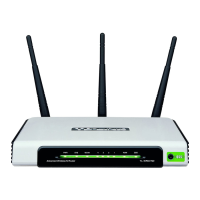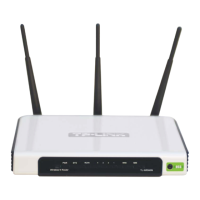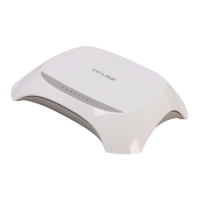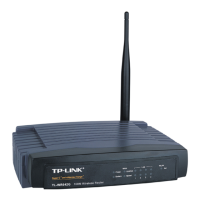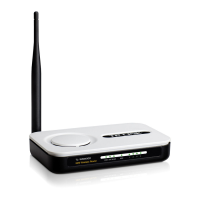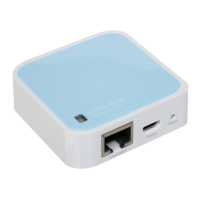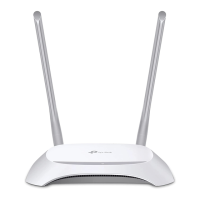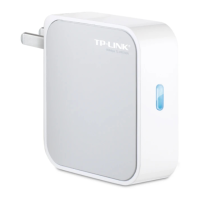TL-WR941N/TL-WR941ND Wireless N Router
Click the Next button to go to the next page and Click the Previous button to return the previous
page.
4.8 Forwarding
Figure 4-29 The Forwarding menu
There are four submenus under the Forwarding menu (shown in Figure 4-29): Virtual Servers,
Port Triggering, DMZ and UPnP. Click any of them, and you will be able to configure the
corresponding function.
4.8.1 Virtual Servers
Choose menu “Forwarding→Virtual Servers”, you can view and add virtual servers in the next
screen (shown in
Figure 4-30). Virtual servers can be used for setting up public services on your
LAN, such as DNS, Email and FTP. A virtual server is defined as a service port, and all requests
from the Internet to this service port will be redirected to the computer specified by the server IP.
Any PC that was used for a virtual server must have a static or reserved IP Address because its
IP Address may be changed when using the DHCP function.
Figure 4-30 Virtual Servers
¾ Service Port - The numbers of External Ports. You can type a service port or a range of
service ports (in XXX – YYY format, XXX is the start port number, YYY is the end port
number).
¾ IP Address - The IP Address of the PC providing the service application.
¾ Protocol - The protocol used for this application, either TCP, UDP, or All (all protocols
supported by the Router).
¾ Status - The status of this entry either Enabled or Disabled.
To setup a virtual server entry:
-47-

